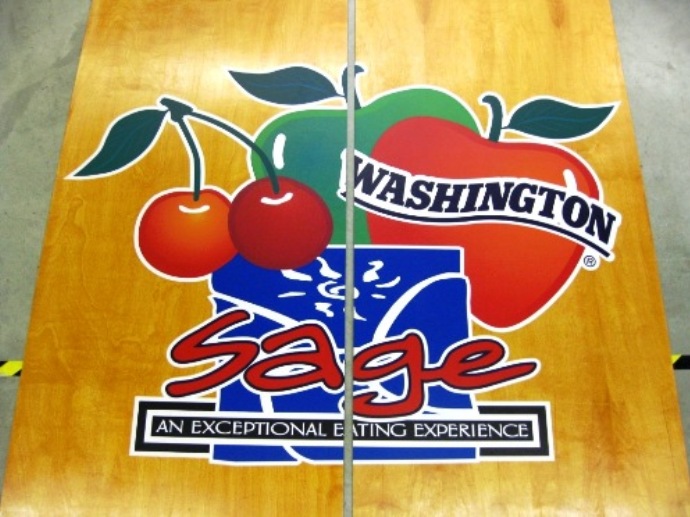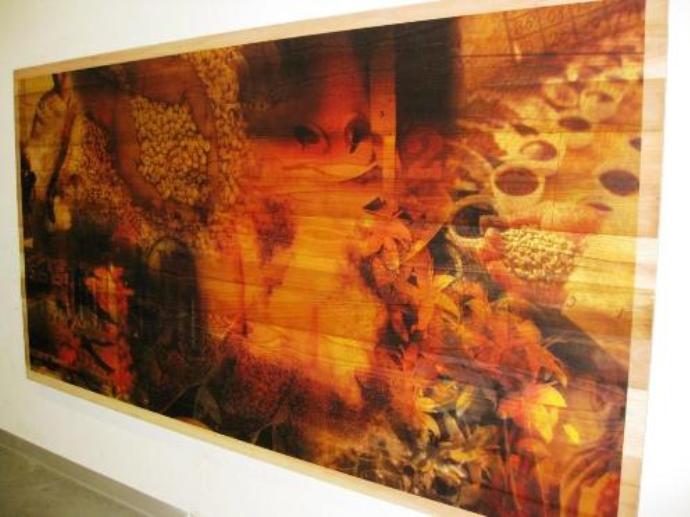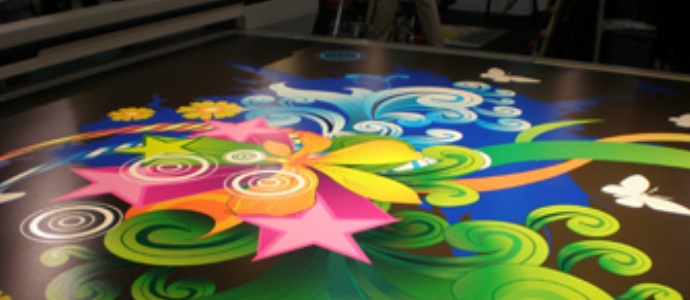This is a reblog from PrintB3.com. (Original is here.)
Two elements together in POP display that really Pop! Wood and White Ink, bright rich color printed directly on wood.
When you want to upscale your POP display or branding in general, consider natural materials like wood and glass. Direct printing with white ink backgrounds will make your project stand out from ordinary print jobs.
Large format printing has been in the exclusive realm for white substrates, where all the color and black in an image is provided by the CYMK process. These inks are translucent and rely on the white substrate for brightness.
The attraction of printing on rich natural textures for POP displays kept PrintB3 hunting for a method to print rich color directly on wood. Until white became practical, direct printing on wood was limited to muted color and highlights were out of the question.
You can illustrate the effect of white ink printed backgrounds with your inkjet printed and ordinary transparent velum. Print your color image on the velum and then place the velum on a white background. Compare the velum image with and without the background. The brighter the background white the brighter the color image.
Without white ink, printing on wood for decorative effects such as wall coverings and artistic images was commonplace. POP displays call for more robust imaging. POP on wood is seen closely by the viewer, more so than decorative elements. Direct printing on natural material like wood and leather for POP displays present richer, more durable images than applied vinyl. White ink in the process makes bright rich color imaging possible on wood substrates.
Transparent materials, glass, polycarbonate (Lexan), and acrylics lend themselves to full color imaging with the addition of white ink. Highlights and bright colors are now possible with the addition of white printed backgrounds.
Until a few short years ago printing white was not practical with ink jet printers. No point going to the gory details of inks and why white was such a problem, but if you really want to know you can read this white ink US Patent 6989054.


